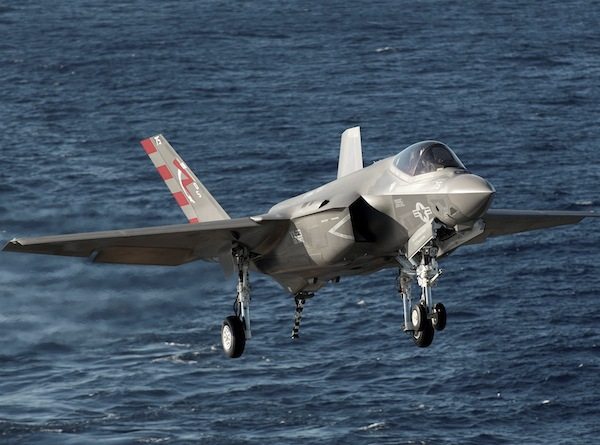The F-35C Lightning II carrier variant Joint Strike Fighter conducted its first carrier-based night flight operations aboard an aircraft carrier off the coast of San Diego Nov. 13.
Navy test pilot Lt. Cmdr. Ted “Dutch” Dyckman piloted F-35C test aircraft CF-03 for the inaugural night flight, taking off from USS Nimitz (CVN 68). At 6:01 p.m. Dyckman conducted a series of planned touch and goes before making an arrested landing at 6:40 pm.
The night flight was part of Development Testing I (DT-I) for the F-35C, which commenced Nov. 3 and is expected to last two weeks. The Nimitz is hosting the F-35 Lightning II Pax River Integrated Test Force from Air Test and Evaluation Squadron (VX) 23 during the initial sea trials of the F-35C.
During DT-I, the test team has conducted a series of events designed to gradually expand the aircraft-operating envelope at sea, including crosswind and low-energy, high-wind catapult launches and approaches to test the aircraft’s ability to perform in both nominal and off-nominal conditions.
Through Nov. 13, two test F-35C aircraft have completed 28 flights for a combined 34.5 flight hours and accomplished more than 75 percent of threshold test requirements. The aircraft also performed 108 catapult launches, 215 planned touch-and-go landings, two long touch and go landings, 110 arrested landings and zero bolters.
Testing thus far has demonstrated the aircraft’s exceptional handling qualities throughout all tested launch and recovery conditions. F-35C maintenance and operations have integrated well with standard Navy carrier procedures onboard Nimitz. The F-35C has proven its ability to operate in the carrier environment and has consistently caught the optimal three-wire during arrested landings. The test team successfully landed during every attempt, with zero hook-down bolters, or failures to catch an arresting cable on the flight deck.
The goal of DT-I, the first of three at-sea test phases planned for the F-35C, is to collect environmental data through added instrumentation to measure the F-35C’s integration to flight deck operations and to further define the F-35C’s operating parameters aboard the aircraft carrier. A thorough assessment of how well the F-35C operated in the shipboard environment will advise the Navy of any adjustments necessary to ensure that the fifth-generation fighter is fully capable and ready to deploy to the fleet in 2018.
The successful night flight of the F-35C represents a step forward in the development of the Navy’s next generation fighter.










